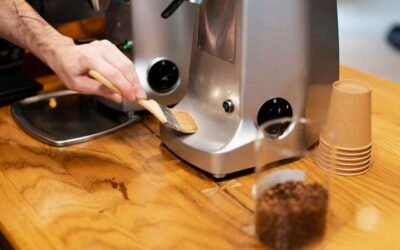When you want fresh, quick coffee or espresso, Nespresso machines have everything you need. However, you must take a few safety precautions to ensure that the beverages taste fantastic and that the equipment is operating at peak efficiency. The frequency of cleaning your Nespresso machine will vary depending on how frequently you use it. Moreover, it will need to be periodically descaled in order to get rid of any minerals that have been built and can ruin the flavor of your espresso. Fortunately, you already have most of the materials needed to do both of these simple tasks. The Nespresso machine can be cleaned as follows.
Items You’ll Require
- Tools and Equipment
- Big mug or cup
- clean napkins
- Soft sponge Composition
- Use dish soap
- Warm water
- Solution for scaling (optional)
- White vinegar is optional.
Empty the drip tray and capsule container
To remove the final capsule, release the handle on your machine before starting the descaling process. Take out the capsule container and throw away all of the used capsules. Then, empty the drip tray of any remaining liquid. After replacing the parts, switch on your machine. Your Nespresso machine’s capsule container and drip tray are typically found on the side or back, but for precise placement, refer to the instruction manual that came with your model.
Fill the reservoir with the descaling solution or white vinegar
Officially, Nespresso suggests their descaling solution, although distilled white vinegar works well in a pinch for many individuals. Pour equal amounts of vinegar and water into the reservoir to make the homemade solution. Otherwise, add roughly 17 fluid ounces (500 mL) of water and a pack of descaling solution. As an alternative, consider creating a citric acid solution. About 34 fluid ounces (1,000 mL) of water and 2 teaspoons (22.8 g) of citric acid should be combined. After that, put it in your tank. For a more thorough cleaning, if your residence has hard water, use distilled water in the tank.
Activate the descaling mode on your Nespresso machine
There is a special method for each Nespresso machine to go into descaling mode. To initiate the cycle, you usually need to press and hold down a few buttons. Once you’re in the descaling cycle, the buttons will begin to flicker. Hold down the top button on a Nespresso Vertuo machine for approximately seven seconds to clean it.
Press the flashing buttons to start cleaning
To begin the descaling process, place a sizable mug or container beneath the machine’s spout and press any of the blinking coffee buttons. The solution will flow through your Nespresso machine and empty into the mug as the cycle completes, clearing off any calcium or limescale accumulation inside. Your machine may beep after the solution is finished going through it, or the buttons may begin to blink once more. Usually, descaling takes ten to twenty minutes.
Rinse the reservoir, drip tray, and cup support
Pour the mug’s cleaning solution down the sink’s drain. Next, take out the machine’s drip tray, cup support, and water tank. Make sure you properly rinse them with warm water to remove any remaining descaling solution residue. Reassemble your machine after using a fresh cloth to gently pat the parts dry. You run the risk of damaging any parts of your Nespresso machine if you place them in the dishwasher.
After adding more water to the reservoir, restart the machine
Add fresh water to the water reservoir once again. Reposition the huge mug under the coffee outlet, then activate the machine again by clicking one of the blinking lights. Your machine will be cleaned of any leftover cleanser when the clean water passes through it. Drain the water from the mug once it’s done. To remove any remaining smells and odors, refill the reservoir and perform one or two additional rinse cycles after using vinegar or citric acid to descale your Nespresso machine.
Take your gadget out of descaling mode
Certain Nespresso machines automatically exit the descaling mode. You might need to press and hold the same buttons on some models in order to activate the cycle. Your machine is then prepared to brew coffee once more. Before operating the machine, let it dry for at least ten minutes.

Image From Freepik
